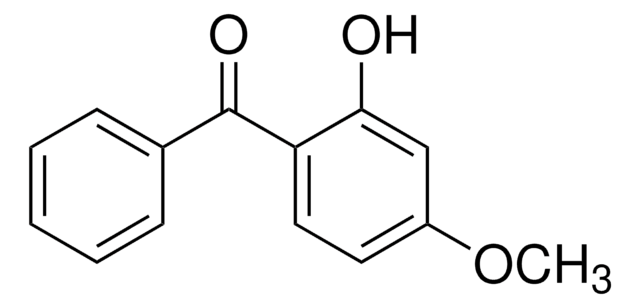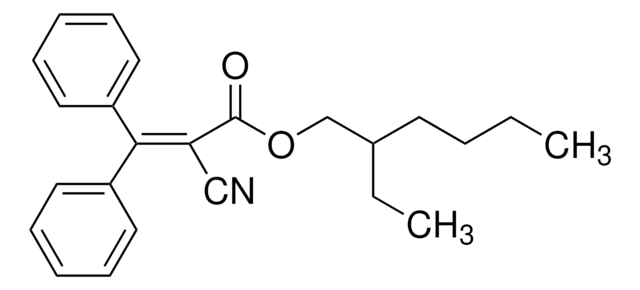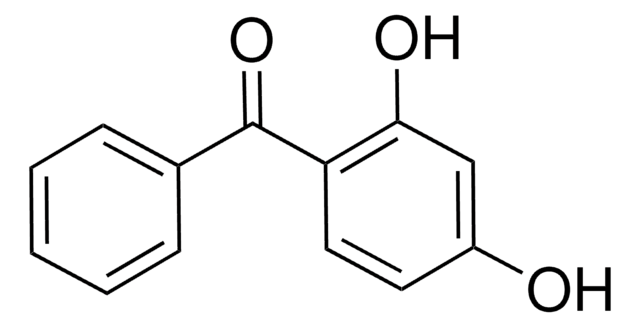Kluczowe dokumenty
1485001
USP
Oxybenzone
United States Pharmacopeia (USP) Reference Standard
Synonim(y):
2-Hydroxy-4-methoxybenzophenone, Oxybenzone
About This Item
Polecane produkty
klasa czystości
pharmaceutical primary standard
rodzina API
oxybenzone
producent / nazwa handlowa
USP
bp
150-160 °C/5 mmHg (lit.)
mp
62-64 °C (lit.)
Zastosowanie
pharmaceutical (small molecule)
Format
neat
ciąg SMILES
COc1ccc(c(O)c1)C(=O)c2ccccc2
InChI
1S/C14H12O3/c1-17-11-7-8-12(13(15)9-11)14(16)10-5-3-2-4-6-10/h2-9,15H,1H3
Klucz InChI
DXGLGDHPHMLXJC-UHFFFAOYSA-N
Szukasz podobnych produktów? Odwiedź Przewodnik dotyczący porównywania produktów
Opis ogólny
Zastosowanie
- Dioxybenzone and Oxybenzone Cream
- Dong Quai Root
- Dong Quai Root Powder
- Oxybenzone
- Sichuan Lovage Rhizome
- Sichuan Lovage Rhizome Powder
- St. John′s Wort Flowering Top
Komentarz do analizy
Inne uwagi
produkt powiązany
Hasło ostrzegawcze
Warning
Zwroty wskazujące rodzaj zagrożenia
Zwroty wskazujące środki ostrożności
Klasyfikacja zagrożeń
Aquatic Acute 1 - Aquatic Chronic 2
Kod klasy składowania
13 - Non Combustible Solids
Klasa zagrożenia wodnego (WGK)
WGK 2
Temperatura zapłonu (°F)
212.0 °F - closed cup
Temperatura zapłonu (°C)
100 °C - closed cup
Wybierz jedną z najnowszych wersji:
Certyfikaty analizy (CoA)
Przepraszamy, ale COA dla tego produktu nie jest aktualnie dostępny online.
Proszę o kontakt, jeśli potrzebna jest pomoc Obsługa Klienta
Masz już ten produkt?
Dokumenty związane z niedawno zakupionymi produktami zostały zamieszczone w Bibliotece dokumentów.
Nasz zespół naukowców ma doświadczenie we wszystkich obszarach badań, w tym w naukach przyrodniczych, materiałoznawstwie, syntezie chemicznej, chromatografii, analityce i wielu innych dziedzinach.
Skontaktuj się z zespołem ds. pomocy technicznej





